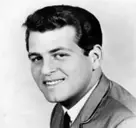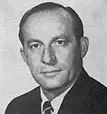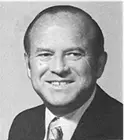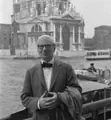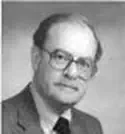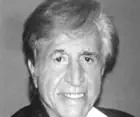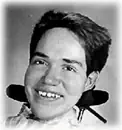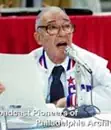יְהֹוָ֣ה נָתַ֔ן וַֽיהֹוָ֖ה לָקָ֑ח יְהִ֛י שֵׁ֥ם יְהֹוָ֖ה מְבֹרָֽךְ
God has given, God has taken away, blessed be the name of God.
Job 1:21
Visiting a gravesite expresses respect for the departed, shows that their memory has not been forgotten, and reinforces one’s connection to them.
Visiting a gravesite expresses respect for the departed, shows that their memory has not been forgotten, and reinforces one’s connection to them.
Visiting famous gravesites of celebrities may seem morbid to some, but for many people it’s a way of paying tribute to important cultural and historical figures. Taking the time to travel to and visit the gravesites of the famous allows us to reflect on the nature of death and remembrance, as well as feel that we are part of their memory being continued for generations to come.
Below, are the stories of some of our more famous “permanent residents.”
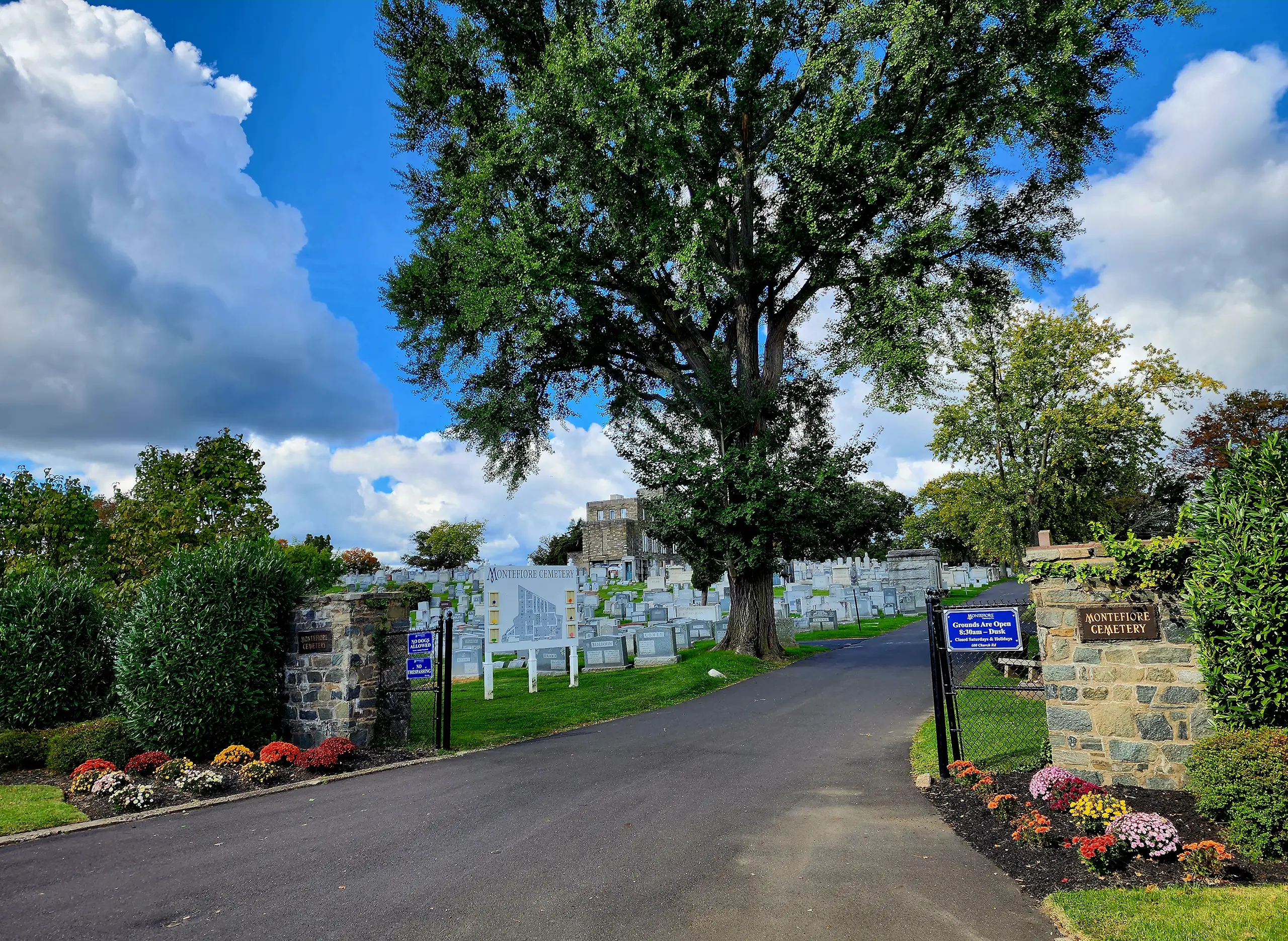
Montefiore Cemetery welcomes you to add to the stories of your loved ones, who reside here, as well.
Click the “SEARCH BURIAL RECORDS” button at the top of this page.
Enter your loved one’s name and click the “SEARCH” button.
Click on the “VIEW AND SUBMIT MEMORIES” button.
Click on the “Please share your memories..” link and let us record their memories in our permanent records.
Visiting famous gravesites of celebrities may seem morbid to some, but for many people it’s a way of paying tribute to important cultural and historical figures. Taking the time to travel to and visit the gravesites of the famous allows us to reflect on the nature of death and remembrance, as well as feel that we are part of their memory being continued for generations to come.
Below, are the stories of some of our more famous “permanent residents.”
June 12, 1942 – November 5, 2020
Leonard Warren Borisoff, known professionally as Len Barry, was an American singer, songwriter, lyricist and record producer. He had success as the lead singer of the Dovells and later as a solo artist. But he was always a reluctant performer, most comfortable as a songwriter and producer.
The Dovells had hits with their danceable early-1960s hits “Bristol Stomp” and “You Can’t Sit Down” and later, Len Barry as a solo artist whose career peaked with his infectious love song “1-2-3.”
The Dovells were a doo-wop group whose members had all sung lead at various times. When the group auditioned for Cameo-Parkway Records in Philadelphia in late 1960, Mr. Barry sang lead on “No, No, No,” a song he had written. They got the deal, and his strong, soulful voice secured his role with the group.
“Lenny had a great voice,” Jerry Gross, one of the Dovells, said in a phone interview. “He had the sound they wanted.”
The back cover of the group’s first album, “Bristol Stomp,” featured “Bristol Stomp” — about teenagers dancing a new step in Bristol, Pa. — and rose to No. 2 on the Billboard Hot 100 chart in 1961. The group performed the song in the 1962 film “Don’t Knock the Twist,” with Mr. Barry displaying a commanding stage presence.
A passionate and talented basketball player, Len was on the Overbrook High School team that won the Philadelphia city title in 1959. His teammates included two future N.B.A. players, Walt Hazzard and Wally (later known as Wali) Jones. While in high school he also sang with a doo-wop group, the Brooktones, some of whose members were later in the Dovells. He would continue to perform with the Dovells and on his own through the early 1970s — but only occasionally afterward.
Leonard’s son recalled this anecdote — At the height of his father’s career, during a tour of the UK, Barry did a command performance for Queen Elizabeth II. “She literally was the only one in the theater,” he said.
April 4, 1953 – March 8, 1998
Laurie Hope Beechman was an American actress and singer, known for her work in Broadway musicals. She also had a career as a cabaret performer and recording artist. After her death, the West Bank Cafe Downstairs Theater Bar in New York was renamed the Laurie Beechman Theatre.
Beechman made her Broadway debut in the 1977 original production of Annie. For her role as the narrator in the 1982 original Broadway production of Joseph and the Amazing Technicolor Dreamcoat, she was nominated for the Tony Award for Best Featured Actress in a Musical. She then went on to be the first actress to play the role of Grizabella in the US national touring production of Cats in 1983, before replacing Betty Buckley in the Broadway production in 1984. She would play the role on Broadway for over four years. She also starred in the Broadway productions of The Pirates of Penzance (1981) and Les Misérables (1990).
During the later years of her life, Beechman married Neil Mazzella in 1992, recorded three more solo albums, performed numerous concerts and club dates, sang at President Bill Clinton’s second inaugural gala, was awarded the Gilda’s Club’s “It’s Always Something” Award, and returned to singing and acting. In early 1995, Beechman, who was previously diagnosed with cancer, suffered a relapse. She spent an hour on The Phil Donahue Show singing and discussing her condition and her will to keep going.
Having returned to play Grizabella on Broadway for the ninth (1991) and tenth (1992) anniversary performances of Cats, she again reprised the role from May to September 1997, so was in the cast on June 19 of that year, when Cats surpassed A Chorus Line to become the longest-running musical in Broadway history at that time.
Although her treatments were ongoing, Beechman continued performing until just a few months before her death on March 8, 1998, at age 44. One month later, a memorial service was held for her at the Winter Garden Theatre, the theatre where Cats played for many years. She was survived by her mother, Dolly Beechman Schnall, stepfather, Dr. Nate Schnall, two sisters, Claudia Beechman Cohen and Jane Beechman Segal, and husband, Neil Mazzella. She was buried at Montefiore Cemetery in Rockledge, Pennsylvania.
Holocaust Survivor
January 20, 1921 – February 10, 2013
Maurice went to schools in Poland as a child where he was ridiculed and hated because he was a Jew and yet these schools could not teach him to hate. He is the sole survivor out of his entire family killed in the Holocaust.
At seventeen he came to America, learned the language, and outworked everyone at one of the biggest shipping companies in the country to eventually become its Vice President of Operations. Colonels and Generals praised his work in shipping war materials overseas and tried to steal him for their own staffs.
He enlisted in the army to go overseas and fight in a war that would determine the course of history.
He came home, married his wife of 65 years and for those 65 years he would say to anyone who would listen, “Isn’t she beautiful?” He has two kids, Lowell and Helene, that he would do anything for, all while working on the docks for many years in all kinds of weather, seven days a week, twelve hours a day, dealing with unions, dealing with stevedores and truckers. It was not work for the faint of heart, but it was work for a man who would do anything to give his family as much as he could.
He has 3 grandchildren, Seth, Adam & Matthew. Like most grandparents, the word love is not strong enough to accurately describe his feelings. When Matt and I first see each other, we usually say, “Oh, hello dear” because that’s what Pop Pop said. Even some of Seth’s friends still call him “Sesh”, because that is what Pop Pop would say in his Polish accent. And Adam would bring him pizza and watch Super Bowls with him.
He has one great grandchild Ella who he commented on, even through the fog of the dying process that there was something extra special about her and she was destined for something great.
On the surface many would say he (Maurice) was an ordinary man. I say he was an extraordinary man whose actions spoke volumes. He could not turn down a charity, he had a smile and a kind word for everyone. He even said, “Thank you” and “God bless you” to his aides who had to move him but caused him much pain.
This man from the docks of Philadelphia’s waterfront could command the respect of teamsters and dock workers during the day and at night be eager to baby sit and change diapers for his grandchildren. He took the diapering very seriously because when Helene and I would come home he would describe the length and firmness of what he found in the diaper.
While we were having dinner with the kids last week Helene told us that one of his aides said that he was ninety-two and had a good life. Helene began to cry and said, “I don’t know if he did.” I guess she was referring to the Holocaust and how hard he worked. He broke his back, no literally, he broke his back at work, lost sight out of one eye, and had many other problems as a result of the work he did.
And as life would have it, there were other problems from time to time. But today, I want to assure Helene, Lowell and Mickey that he not only had a good life, he had a great life.
Tom Brokow even wrote a book about him even though he never met him. It’s called, “The Greatest Generation.” It’s his story and the story of tens
of thousands of men who, like him, enlisted to put themselves in harm’s way, who would workday and night to provide for their families, who would literally break their back for you.
Today we are saying goodbye to one of the last vestiges of a dying breed, an American icon, the World War II Veteran, and the prototype of the Greatest Generation. Maurice Chorney, your wife holds the flag of a grateful nation. Your children, grandchildren, your great grandchild love you and I love you. You can stand down now and rest in peace!
* Maurice’s son in-law had so much respect and admiration for his father in-law that he wrote a book about Maurice and his family that perished in the Holocaust. The book is called, “Dearest Maysheleh” because that is the affectionate name Maurice’s parents called him in numerous letters he received from them. Their letters, and this eulogy, are included in the book.
July 4, 1920 – February 6, 2015
Norm Drucker was a major influence in professional basketball officiating for over 35 years. His NBA and ABA officiating career as both a referee and Supervisor of Officials spanned the careers of all-time pro basketball greats, from George Mikan, Bob Cousy, Dolph Schayes and Bob Pettit in the 1950s, to Wilt Chamberlain, Jerry West, Elgin Baylor and Bill Russell in the 1960s, to Julius Erving, Rick Barry, Bill Bradley and Walt Frazier in the 1970s and to Larry Bird and Magic Johnson in the 1980s.
Drucker’s basketball career began as player where he learned the game from the first generation of basketball superstars. He played high school basketball at Erasmus Hall High School in Brooklyn] starting in 1937, in an era when there was no 3-second rule, goal tending was permitted and there was a jump ball after every basket. He played college basketball at City College of New York (CCNY) under Hall of Fame Coach Nat Holman. Holman, a star in the 1930s was often referred to as “the world’s best basketball player.” Drucker’s 1941-42 CCNY team, which included future New York Knick coach and Hall of Famer Red Holzman, was ranked #3 in the country and advanced to the NIT championship tournament, the preeminent post-season tournament of that era. As a part-time starter, The New York Times called Drucker “aggressive, alert and spirited”.
In January 1943, World War II interrupted Drucker’s college career. In the U.S. Army for 3 1/2 years, he served in Europe and was discharged a first Lieutenant.
Drucker was inducted into the CCNY Athletic Hall of Fame in 1986. In 1994, he was inducted into the New York City Basketball Hall of Fame for his officiating career and was also inducted in 1998 into the National Jewish Sports Hall of Fame.
Drucker retired to East Norriton, Pennsylvania, and died in 2015.
U.S. House of Representatives, Pennsylvania’s 4th District
February 12, 1921 – March 24, 2004
Eilberg was born in Philadelphia, Pennsylvania. He graduated from Central High School (Philadelphia), The Wharton School at the University of Pennsylvania and Temple University School of Law.
He entered the United States Naval Reserve and became a private practice lawyer, later becoming assistant district attorney of the city of Philadelphia from 1952 to 1954. He was elected to the Pennsylvania State House of Representatives, serving from 1954 to 1966, rising to the position of majority leader in 1965–1966. He was a delegate to the Democratic National Conventions of 1960, 1964 and 1968, and was the Democratic ward leader for the fifty-fourth ward of Philadelphia.
He was elected in 1966 as a Democrat to the 90th and to the five succeeding Congresses. In 1974, Eilberg defeated Chris Matthews, former host of MSNBC’s Hardball with Chris Matthews, in the Democratic primary. In 1978, he defeated Mark B. Cohen in the Democratic primary, before losing to Charles F. Dougherty. While in office, he served as the Chairman of the Judiciary Subcommittee on Immigration, Citizenship, and International Law. In that role, Representative Eilberg led a legislative veto to override the Attorney General’s suspension of deportation of Jagdish Rai Chadha and five others under the Immigration and Nationality Act. The Supreme Court later found the legislative veto unconstitutional in INS v. Chadha, 462 U.S. 919 (1983).
Eilberg sponsored 266 Bills and cosponsored over 1400 additional pieces of legislation during his tenure in Congress.
Since Montefiore’s founding in 1910, the cemetery has been chosen to honor the lives of many members of this fine family.
February 29, 1901 – March 17, 1974
Louis Isadore Kahn was born Itze-Leib Schmuilowsky in 1901 on Osel, an island off the coast of Estonia. His family emigrated to the United States when he was four, settling in Philadelphia, where they had relatives already living nearby. In 1915, upon becoming naturalized citizens, his parents “Americanized” the family’s names, taking the surname Kahn, which had been chosen by a relative who had emigrated earlier.
From an early age, Kahn displayed a gift for drawing, but his parents were too poor to buy art materials, so he improvised and sketched with burnt twigs and matches. He favored the quality of the charcoal line so much that even after he had become a celebrated architect, he continued at times to draw with burnt matches. His obvious intelligence and early talent for art prompted his teachers to enroll him in competitions for gifted students throughout his public schooling. Despite winning a full art scholarship from the Pennsylvania Academy of Art, a required course in architectural history during his final year in high school led him to study architecture.
Kahn received Beaux-Arts training at the University of Pennsylvania, where one of his teachers was the French-born and French-educated Paul Philippe Cret, who practiced a brand of classical modernism noteworthy for its dignity and restraint. Kahn came to hold the first Paul Philippe Cret chair at the University of Pennsylvania, where he taught his own idiosyncratic modernism, which would engender the heterogeneous “Philadelphia school.”
Kahn’s most ambitious projects, where he would most eloquently express his ideals regarding a transcendent architecture of universal forms, were realized primarily on the Indian subcontinent. In 1962, he received commissions to design the newly established Indian Institute of Management in Ahmedabad, India, and the capital building Sher-e-Bangla nagar in Dhaka, the first city of East Pakistan.
Kahn also built several masterworks in the U.S., including the 1972 Kimbell Art Museum and yet another museum for Yale, the 1974 Yale Center for British Art.
His oeuvre may be small compared to other architects of his stature, but it is all the more impressive for the influence it has had—and continues to have—on contemporary architecture.
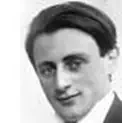
September 1, 1895 – September 8, 1970
Manfred Lewandowski was a German-US-American cantor, classical baritone and composer.
Born in Hamburg, Lewandowski came from a Jewish cantorial family. He was the great-nephew of Louis Lewandowski, the innovator of synagogue music in 19th century Germany, and was trained first by his father, then at the Vogt Conservatory; his vocal subject was the baritone. He performed as a synagogue singer at an early age. From 1921 to 1923 he was head cantor in Königsberg (East Prussia), from 1923 to 1928 at the Synagogue, “Friedenstempel“ Halensee in Berlin-Halensee and from 1928 to 1938 head cantor at the Synagogue Lindenstraße in Berlin-Kreuzberg.
In addition to this activity in the field of Jewish liturgical singing, he was also a regular guest on the Funk-Stunde Berlin after the introduction of radio in Germany from 1924, where he performed synagogue songs on the microphone in addition to the classical repertoire. He also performed opera arias and songs on other radio stations in Germany.
During this time, he also made numerous recordings on Electrola, Odeon and Homocord, including opera scenes (which include duets with Hans Heinz Bollmann), songs and Jewish liturgical music. On Homocord, the organist Franz Doll and the pianist and Kapellmeister Dr. Felix Günther were his accompanists.
In the summer of 1938, he emigrated to France and from there to North America in 1939. He worked here as cantor at a New York synagogue 1939–1940, in Philadelphia 1940–1948, but continued to perform in synagogues until 1965.
In the US, he recorded religious music again in 1940 on the American Vox ‘label’. He was also active as a composer, especially in the field of synagogue singing.
Lewandowski died in Philadelphia at the age of 75 and found his final resting place at Montefiore Cemetery.
November 1, 1922 – January 8, 2008
The early generations of the Lipkin family started their kosher bakery at Fourth and McKean streets, before moving the operation to 8013 Castor Avenue in 1975. The wholesale and retail bakery became a staple in Rhawnhurst and a destination point for Philadelphians, kosher or not.
The origins of Lipkin’s, however, started out a little lonelier, when the grandfather of Mitch Lipkin a baker emigrated from Poland to the United States. Secretly taking shelter on a boat, Lipkin was detained by the ship’s crew, who threatened to throw him overboard into the ocean. Lipkin made the argument that he had a greater purpose on the ship and in America – he could bake.
At Lipkin’s Bakery in Northeast Philadelphia, the knish extruder pumped out more than 35 knishes a minute like the infamous “I Love Lucy” chocolate conveyor belt. With the high demand for the potato knish, a favorite among customers, Lipkin’s produced a whopping 2,592 of the potato-filled pastries per week. The bakery closed its doors to the public on May 2, 2022.
However, in the Fall of 2022, Lipkin’s Bakery reopened as Lipkin’s Best, merging with Overbrook Park’s Best Cake Kosher Bakery after it acquired Lipkin’s. The bakery, located on Haverford Avenue, will maintain Best Cake’s Keystone-K kosher certification. Lipkin’s Bakery has found a new home to sling knishes.
For loyal customers, Lipkin’s is symbolic of a quintessential Jewish bakery, a staple in American Jewish communities.
Reform Leader, Author, Keneseth Israel Rabbi
1931 – January 29, 2022
Rabbi Simeon Maslin was a national leader in the Reform movement and the senior rabbi at Reform Congregation Keneseth Israel for 17 years.
The rabbi guided the Elkins Park synagogue from 1980 to 1997, his last stop in a 50-plus-year career that included positions in Chicago, Curaçao and Monroe, New York. He also served as president of the Central Conference of American Rabbis, an organization uniting about 2,000 Reform rabbis.
He was president of the New York-based Central Conference of American Rabbis from 1995 to 1997, active with the World Union for Progressive Judaism, and a member of the Board of Rabbis of Greater Philadelphia, the Jewish Federation of Greater Philadelphia, and other groups.
As a Reform leader, Maslin wrote the book “Gates of Mitzvah” in 1979, which, introduced classic Jewish life cycle practices into the movement. Maslin’s insight helped modern Jews go deeper and conduct baby namings, marriages and funerals in an authentic fashion. It was Maslin who provided the answer in “Gates of Mitzvah.” Focus on the timeless traditions that make up a Jewish life. He played the role of reintroducing tradition into Reform Judaism.
Born in 1931 in Winthrop, Massachusetts, near Boston, the rabbi graduated from Harvard University. He became ordained in 1957 at Hebrew Union College in Cincinnati.
He died from cancer on Jan. 29, 2022. He was 90.
“Giant Gene“
July 11, 1941 – November 18, 2019
Arnold Rubin, nicknamed “Giant Gene” by his fans at record hops and dances, was an American radio and television personality from Philadelphia.
Arnold, whose real name was Arnold Eugene Rubin, began his musical career in the 1950s, appearing on American Bandstand as a singing teenager in 1956. Dick Clark gave him the stage name ‘Rick Roman.’ As Rick Roman, he recorded, wrote and performed in rock n roll shows. He also wrote or contributed lyric lines or ideas to many of the top hits of the 1960s and early 1970s. He later wrote many jingles.
Arnold wrote and produced records under the Rick Roman name. (The Tridels, The Good Guys, The Stylettes, on SanDee and Worldwide Limited Records, and is an ASCAP Composer.)
Arnold and his wife Terry helped pioneer many of the early Philadelphia progressive-rock groups such as The Nazz, American Dream, Stone Dawn, Woody’s Truck Stop, Mandrake Memorial, Elizabeth, and The Legions, Stone Dawn, Almond Joy, The Driftwoods, by hosting the first “Be-IN” at Belmont Plateau in Philadelphia’s Fairmount Park. He was involved heavily in promoting and serving as master of ceremonies (MC) for the first Earth Day concert, to which he drove his propane-powered car. He also acted as Master of Ceremonies for many of the top concerts at the Electric Factory and The Spectrum, including concerts by Jimi Hendrix and The Doors, as well as Steppenwolf, Chicago, Janis Joplin and The Who. Arnold was also a favorite MC of The Allman Brothers. He also introduced acts at the famed Main Point in Bryn Mawr PA, including Cat Stevens and Stevie Wonder.
Arnold married Terry Hunter, herself a singer and entertainer, on June 24, 1962. They were part of “The Sounds of Philly” scene for years.
He died on November 18, 2019, after a long battle with cancer.
May 1981 – September 2017
Eyal was born in May 1981 to Leah and Rabbi Charles Sherman in Syracuse, N.Y. After being diagnosed with a brain stem tumor at the age of 4 and undergoing radical surgery to remove it, Eyal suffered a crippling stroke that left him quadriplegic. He would never walk again. He could not move on his own. He needed around-the-clock medical attention and underwent countless surgeries throughout his young life. At a time when children with such shattering disabilities were warehoused, said his father, Eyal was brought home to enjoy a life that had a remarkable level of normalcy.
“After he took sick, the Eyal we related to, cognitively and intellectually — he still had those qualities. We called it his ‘Eyal-ness.’ He was still our Eyal,” said his father. “You want to have two things: a body and a soul. If you only get one thing, what do you take? You have people in nursing homes who are walking around and are absolutely perfect, but they have no idea who they are. And then you have people like Eyal whose body is terribly broken, but the heart, the vibrancy, and the energy is all there. Unbeknownst to him, he became this heroic figure who taught by example. He never, ever complained about his lot in life.”
After he completed Nottingham High School with honors in 1999, Eyal began taking classes at Syracuse University, accompanied at every stage by his mother, from his first semester through his graduation nine years later with a degree in fine arts and a talent for painting by holding a fitted paintbrush in his mouth. Eyal’s father helped arrange continuing, daily Skype conversations between Eyal and far-flung siblings after they grew up and left home.Rabbi Sherman wrote about Eyal in his 2014 book, The Broken and the Whole: Discovering Joy After Heartbreak, published by Scribner, which was awarded a Kirkus Star for books of exceptional merit. Eyal also appeared in numerous newspapers stories. Dateline NBC produced a segment about his life a few years ago.
May 15, 1910 – December 25, 1985
Dave Zinkoff was a sports public address announcer. He announced for the Philadelphia Phillies at Shibe Park in the 1940s and at the Philadelphia Convention Hall for the Philadelphia Warriors, Philadelphia 76ers, and for college boxing and wrestling teams from the 1950s to the early 1980s.
Zinkoff was also one of the rotating group of ring announcers for the monthly World Wrestling Federation (now WWE) events at the Spectrum.
Zinkoff worked Wilt Chamberlain’s 100-point game at Hershey Arena on March 2, 1962.
Dave Zinkoff was posthumously inducted into the Broadcast Pioneers of Philadelphia Hall of Fame on November 22, 2013.
A nice Jewish boy whose parents wanted him to be a lawyer, a doctor or a CPA, Dave “The Zink” Zinkoff was perhaps the most famous voice in the history of professional basketball.
For years he was the voice of the Philadelphia 76ers and, before that, the Philadelphia Warriors, where he coined such colorful phrases as “Dipper Dunk” and “Gola Goal”.
He traveled around the world with the Harlem Globetrotters and prior to that worked with Eddie Gottlieb as an announcer for the Philadelphia Sphas.
Zinkoff died on December 25, 1985, following complications from heart surgery.
On March 25, 1986, three months to the day after his death, the 76ers retired his microphone.

